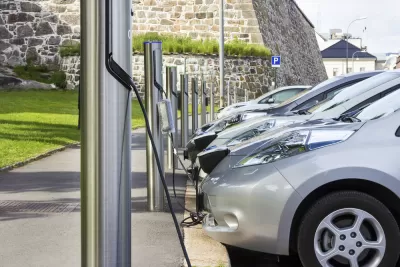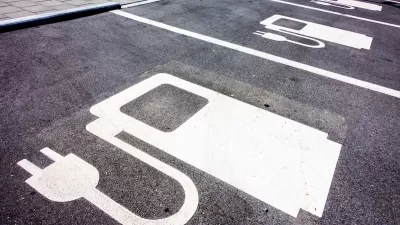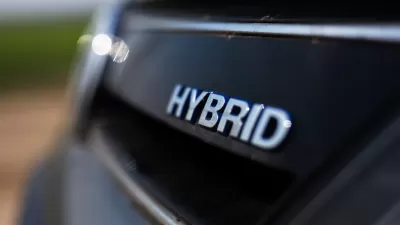Over a decade ago, automakers predicted that every new car would be a hybrid by 2020. Why were they so off the mark?

In 2008, an IBM report "asked 125 auto industry executives about their predictions for what cars would be like in 2020. The resulting report predicted every car by 2020 would be a hybrid," writes Aaron Gordon. Yet the actual numbers are nowhere close: only about three percent of new cars sold in 2020 were hybrids, an extremely modest increase from 2.4 percent at the time of the report. Automakers also wrongly predicted a trend toward smaller, more efficient vehicles. In fact, "as quickly as the economy recovered and gas prices fell, consumers returned to buying the biggest trucks and SUVs they could find." Meanwhile, hybrids became associated with Hollywood elites, decreasing their appeal for many ordinary Americans.
Dan Sperling, professor at University of California, Davis and founding director of the Institute for Transportation Studies, more accurately predicted the pace of hybrid and EV adoption. But Sperling thinks the current situation is different. According to Sperling, "the combination of reduced battery costs and future regulations both in the U.S. and abroad will ensure auto companies follow through" on new plans to boost EV production and sales. "Even if the federal government doesn't enact EV mandates, California will, Sperling said, and many states will likely follow. He predicted the needle won't move much before 2026, but after that, expect the market to take off."
FULL STORY: Experts Predicted All Cars Would Be Hybrid by 2020. Why Were They Wrong?

Study: Maui’s Plan to Convert Vacation Rentals to Long-Term Housing Could Cause Nearly $1 Billion Economic Loss
The plan would reduce visitor accommodation by 25,% resulting in 1,900 jobs lost.

North Texas Transit Leaders Tout Benefits of TOD for Growing Region
At a summit focused on transit-oriented development, policymakers discussed how North Texas’ expanded light rail system can serve as a tool for economic growth.

Using Old Oil and Gas Wells for Green Energy Storage
Penn State researchers have found that repurposing abandoned oil and gas wells for geothermal-assisted compressed-air energy storage can boost efficiency, reduce environmental risks, and support clean energy and job transitions.

How Madison’s Tree Planting Efforts Are Growing a Healthier Community
Madison’s annual tree planting initiative is enhancing environmental resilience, public health, and community livability by adding 1,400 carefully selected trees citywide, with strong community and institutional support for urban forestry.

Texas State Bills Could Kill Transit Funding in Dallas, Austin
State lawmakers could pull funding from the state’s largest transit agency and the ambitious Project Connect, a voter-approved transit project in Austin.

Opinion: DC Encampment Sweeps Hide, but Don’t Solve, Homelessness
President Trump recently ordered the clearing of encampments built by unhoused people on federal land in Washington, D.C.
Urban Design for Planners 1: Software Tools
This six-course series explores essential urban design concepts using open source software and equips planners with the tools they need to participate fully in the urban design process.
Planning for Universal Design
Learn the tools for implementing Universal Design in planning regulations.
Ascent Environmental
Borough of Carlisle
Institute for Housing and Urban Development Studies (IHS)
City of Grandview
Harvard GSD Executive Education
Toledo-Lucas County Plan Commissions
Salt Lake City
NYU Wagner Graduate School of Public Service





























